The Eight Auspicious Signs Mandala Publications

Eight Auspicious Symbols with frame Painting by Carmen Mensink Pixels
All Eight of the Eight Auspicious signs, from left to right top: Dharmachakra (Dharma Wheel) Parosol, Endless knot, Conch Shell and on lower row left to right: treasure vase, lotus, victory banner, two golden fish. Inviting Spiritual Transformation with the Eight Auspicious Symbols The Eight Auspicious Signs are more than lucky Feng Shui objects.
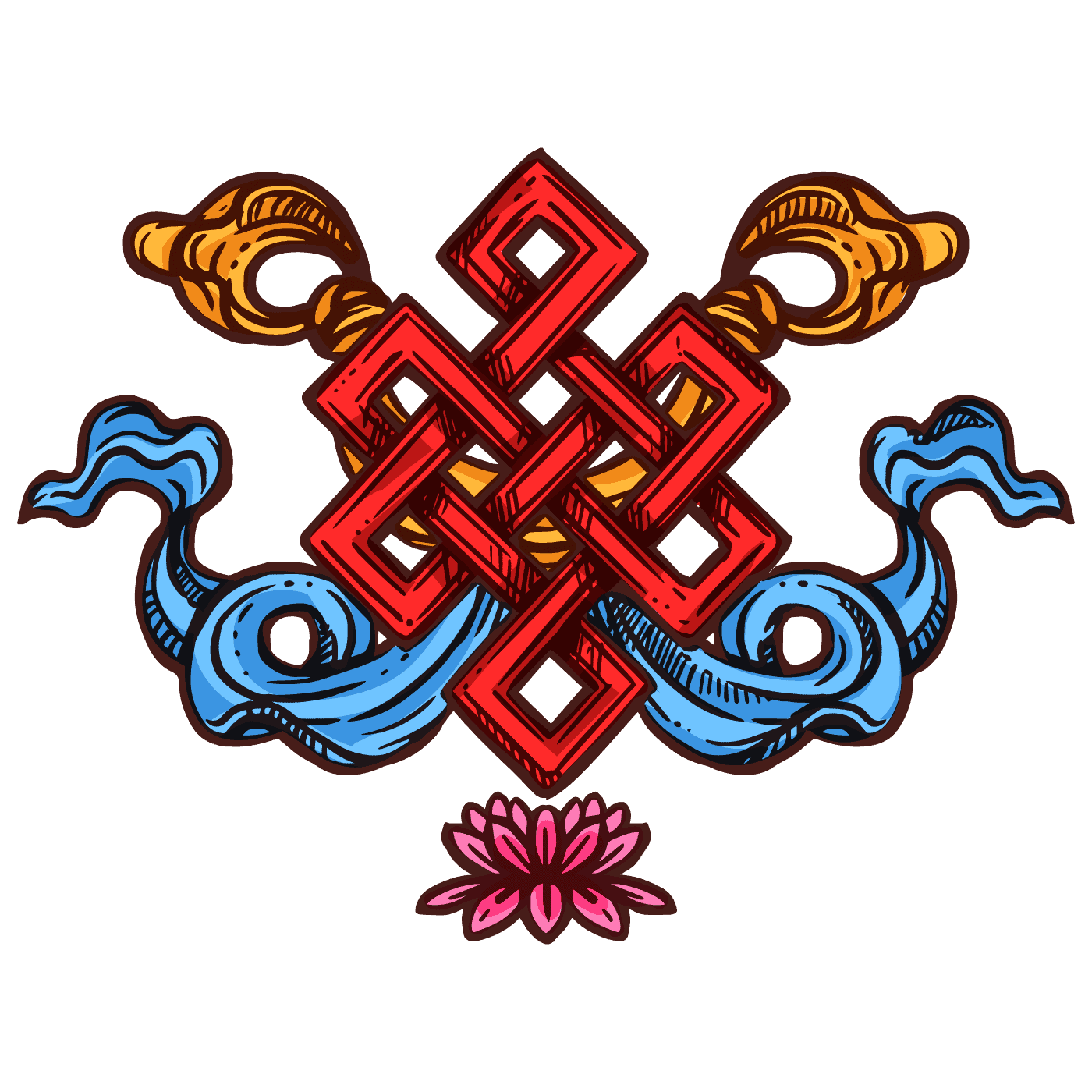
Tibetan Buddhist Symbols And Their Meanings
There are eight different auspicious symbols of Buddhism, and many say that these signify the gifts that God made to the Buddha when he achieved nirvana. Let us talk about these 8 different auspicious symbols of Buddhism. The Parasol
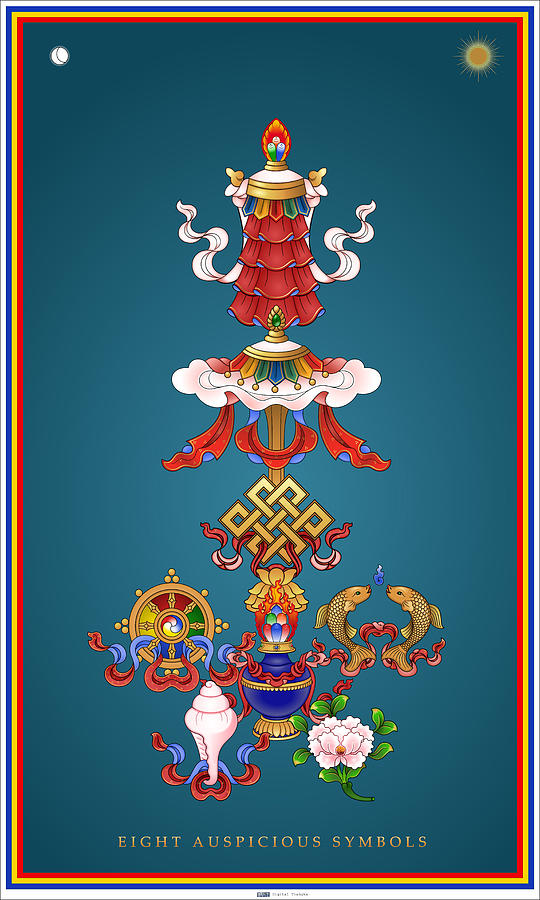
Eight Auspicious Symbols Painting by Fred Van der Zee
What Do the Eight Auspicious Symbols Mean? The Ashtamangala are a set of eight auspicious symbols that have been used in Buddhist traditions for centuries. They represent some of the most important aspects of Tibetan Buddhist teaching, including wisdom, compassion, and fearlessness.
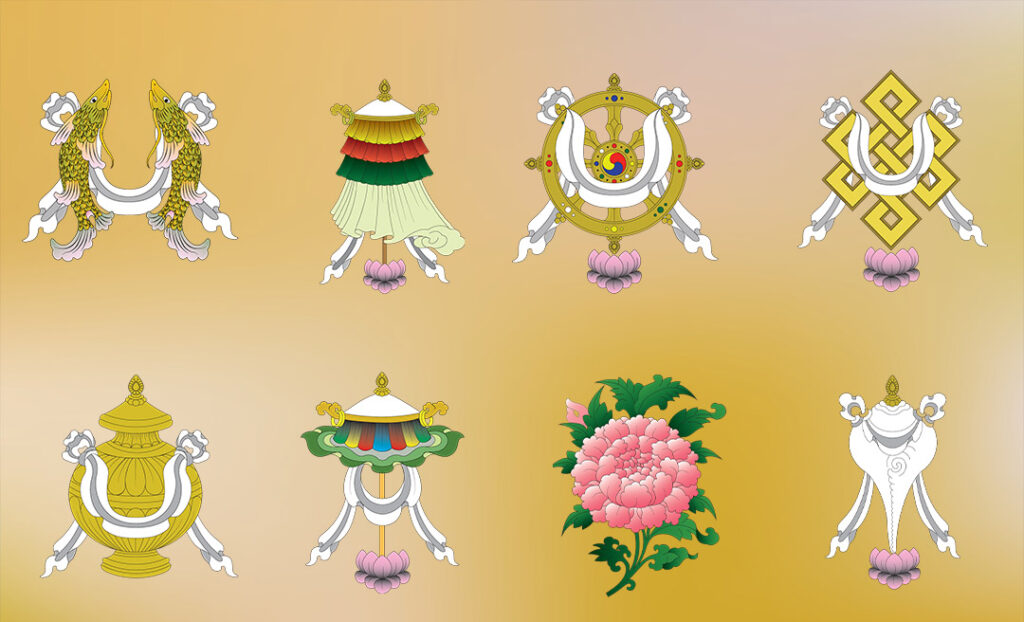
Eight Auspicious Symbols Lucky symbols of Tibet Tibet Universal Travel
The 8 Auspicious Symbols in Tibetan Buddhism. The Eight Auspicious Symbols is the most famous set of symbols in Tibetan Buddhism. More information will be added to this page. Short explanation of the Tibetan Symbols of Luck: Endless Knot. The Endless Knot (or Eternal Knot) has no beginning and no end.
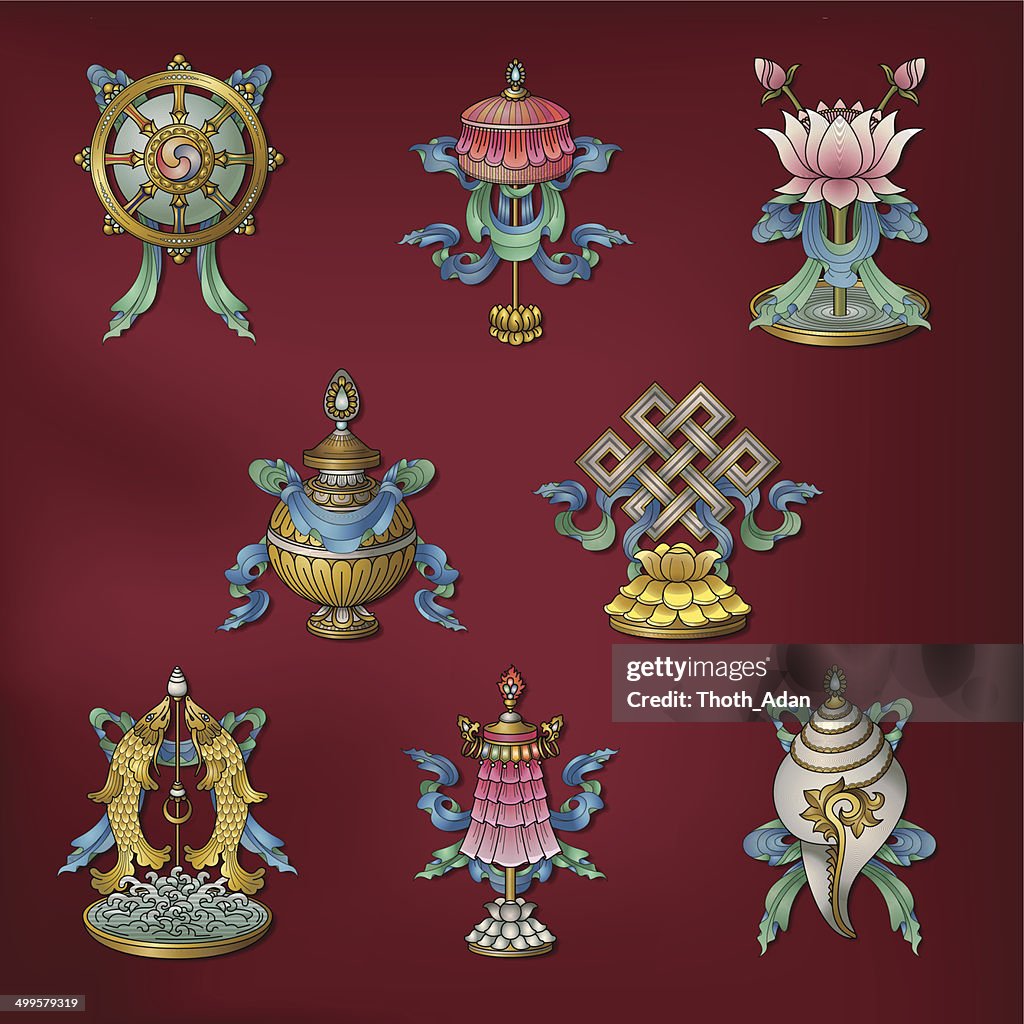
Eight Auspicious Signs Ashtamangala HighRes Vector Graphic Getty Images
The Ashtamangala ( Sanskrit: अष्टमङ्गल, romanized : Aṣṭamaṅgala) is a sacred suite of Eight Auspicious Signs featured in a number of Indian religions such as Hinduism, Jainism, and Buddhism. The symbols or "symbolic attributes" ( Tibetan: ཕྱག་མཚན་, THL: chaktsen) are yidam and teaching tools.

Eight Auspicious Symbol Thangka Painting Hand Painted Etsy
Groupings of Eight auspicious symbols were originally used in India at ceremonies such as an investiture or coronation of a king. An early grouping of symbols included: throne, swastika, handprint, hooked knot, vase of jewels, water libation flask, pair of fishes, lidded bowl.

The Eight Auspicious Symbols. Represents the offerings to Shakyamuni Buddha
You may be surprised as to why these 8 symbols are called "auspicious"? They are called "auspicious" because they are symbols that conducive to success. Hence, these 8 symbols are often seen in many holy altars in front of the Buddha and on murals. And there are also a few carved and shaped three-dimensional shapes.
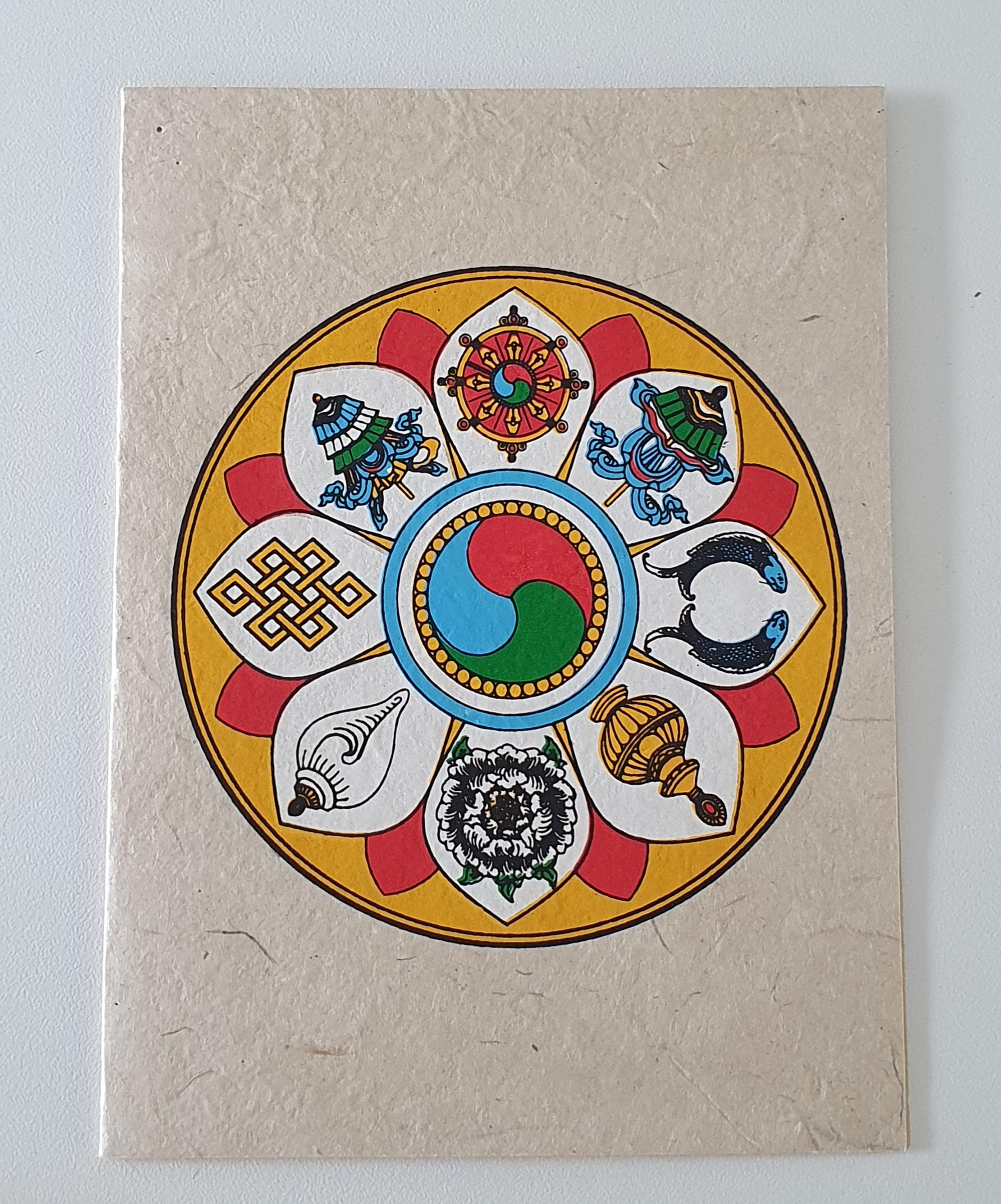
Hand Printed Eight Auspicious Symbols Cards
Here is a brief overview of the Eight Auspicious Symbols: The Parasol Osel Shen Phen Ling , / Bob Jacobson The parasol is a symbol of royal dignity and protection from the heat of the sun. By extension, it represents protection from suffering.

Buddhist Symbolism The 8 Auspicious Symbols Of och fler bilder på
aṣṭamaṅgala, eight auspicious symbols frequently represented on Jaina ritual objects. Aṣṭamaṅgala s are common to both the Śvetāmbara and Digambara sects and are found on 1st-century- ad votive slabs and in miniature paintings, as well as being employed in Jaina worship today. In the modern Jaina temple they are seen carved on the offering stands.
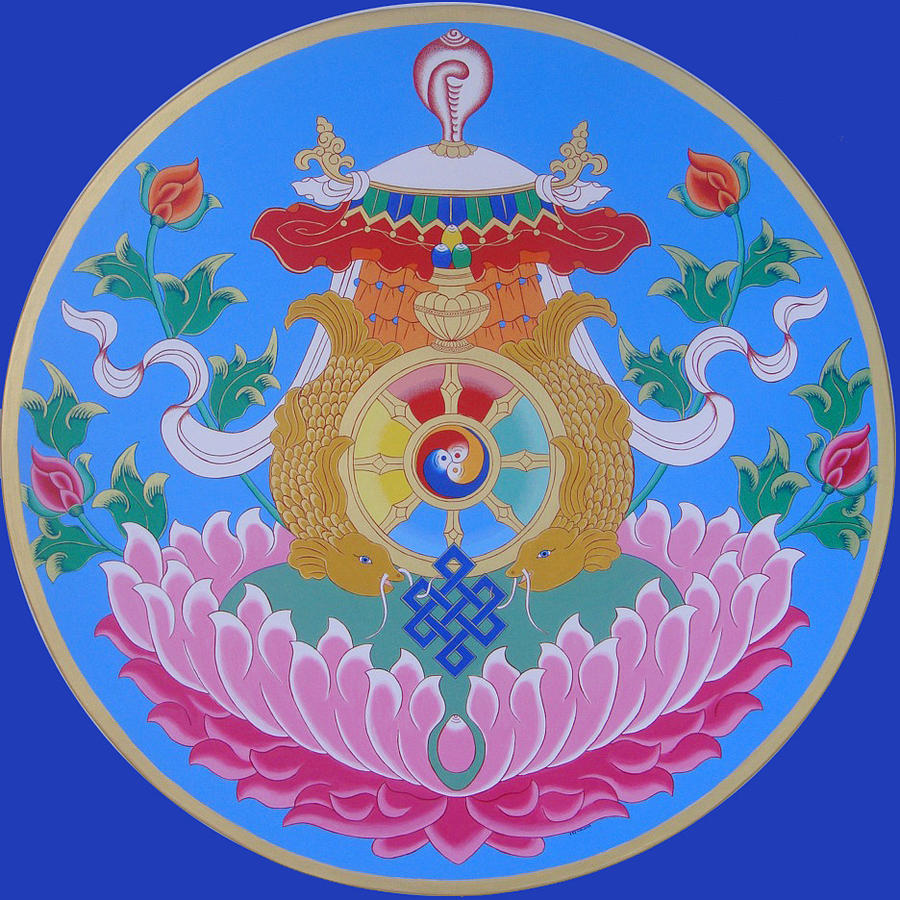
Eight Auspicious Symbols Painting by Ies Walker
The Eight Auspicious Symbols 1. Right-coiled White Conch: The white conch which coils to the right symbolises the deep, far-reaching and melodious sound of the Dharma teachings, which being appropriate to different natures, predispositions and aspirations of disciples, awakens them from the deep slumber of ignorance and urges them to accomplish their own and others' welfare.
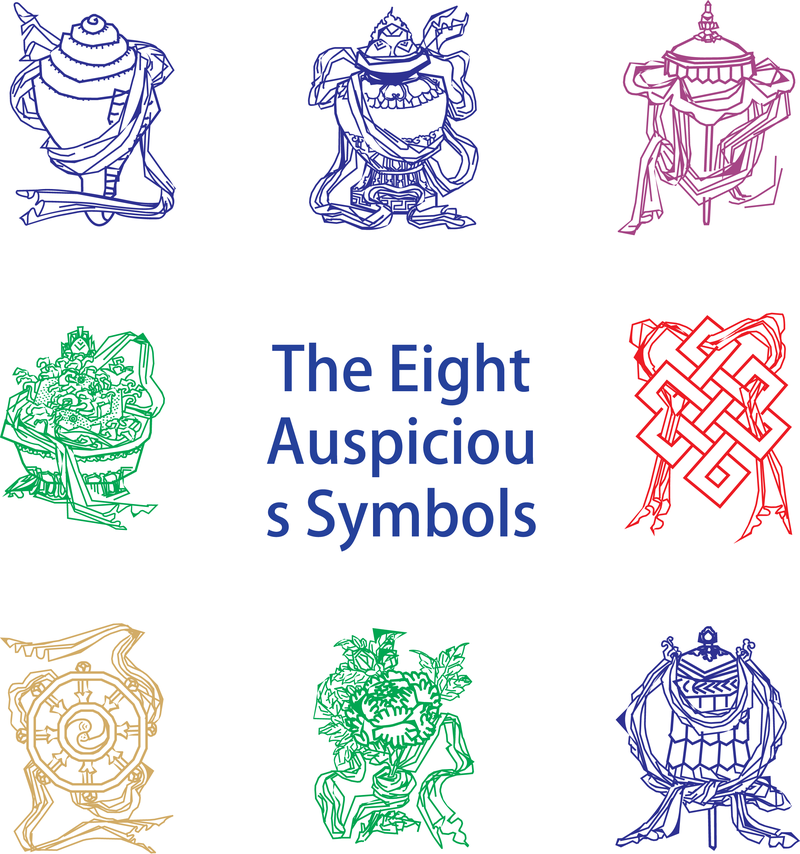
Eight Auspicious Symbols Vector Graphic Vector download
The eight auspicious symbols (Skt. aṣṭamaṅgala; T. bkra shis rtags brgyad བཀྲ་ཤིས་རྟགས་བརྒྱད་; C. ba jixiang 八吉祥) are a set of eight symbols of good fortune that are found in Buddhism and other Indian traditions. The symbols are particularly popular in Tibet and Nepal, and to a lesser extent in China. [1]

8 best Eight Auspicious Symbols images on Pinterest Buddha art, Buddhist art and Tibetan art
Eight Auspicious Symbols | Conch, Dharma wheel, Lotus flower, etc. 1. Conch In Buddhism a white conch that coils to the right symbolizes the renown of the Buddha's teachings. Its melodious sound of Dharma reaches far and wide and accords with beings' different natures, awakening them from the deep lumber of ignorance.
/sb10068888cr-001-58b5a4133df78cdcd88353e6.jpg)
About the Eight Auspicious Symbols of Buddhism
(Bio below.) The Ashtamangala: Eight Auspicious Symbols of the Buddha. The Conch The Conch is one of the Ashtamangala — it is a "right whorl" conch only. In terms of "body symbolism" it is the symbol of "Teeth" This symbol, of a white, right-turning conch shell, is representative of the deep, melodious and interpenetrating sound of the dharma.
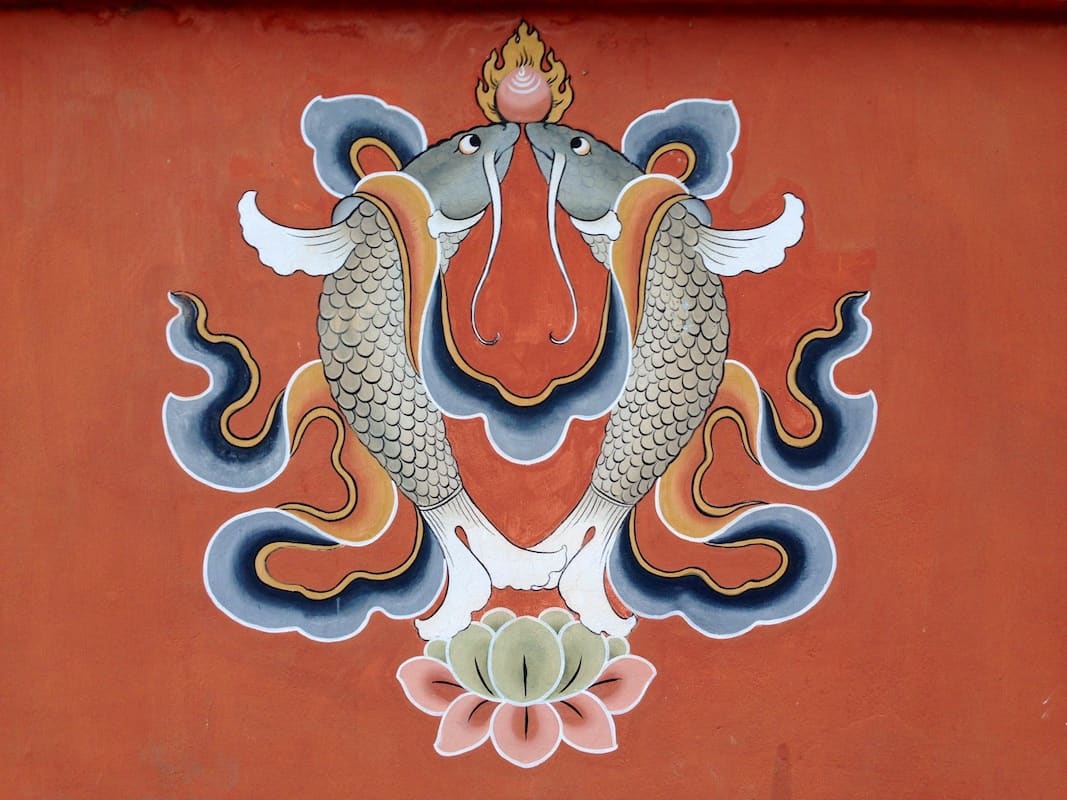
The Whitewater Rafter's Guide to the 8 Auspicious Symbols of Buddhism Northwest Rafting Company
There are eight auspicious symbols in Buddhism, which are also known as "the eight symbols of good fortune in Buddhism", underlining the importance of achieving enlightenment through various teachings of Buddha. The Eight Auspicious Symbols of Buddhism by Uliabond Contents show The Origins of The Eight Auspicious Symbols of Buddhism

The Eight Auspicious Signs Mandala Publications
The Eight Auspicious Symbols or Ashtamangala in Sanskrit are a series of eight basic Buddhist Symbols that represent the teaching of the Buddha and important spiritual concepts at the core of the Buddhist philosophy.

The Eight Auspicious Symbols Tibetan Thanka
Golden Fish The golden fish symbolises the auspiciousness of all living beings in a state of fearlessness, without danger of drowning in the ocean of sufferings, and migrating from place to place freely and spontaneously, just as fish swim freely without fear through water. Dharma Wheel